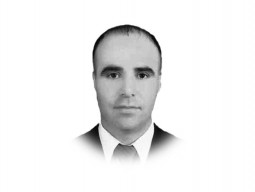
President Obama’s Afghan strategy is aimed at a clear and focused goal: to disrupt, dismantle and defeat al Qaeda and its allies in Pakistan and Afghanistan and prevent their return to either country. His policy speech of March 2009 included the realisation that the future of Afghanistan is inextricably linked to the future of Pakistan.
In December 2009, President Obama announced the deployment of 30,000 additional troops in Afghanistan to reverse the Taliban momentum and set July 2011 as a date to begin pulling US forces out of the country. He also pointed out the need to accelerate efforts to build an Afghan army and a police force to take on security responsibilities following the withdrawal. Obama identified three core elements of the new strategy: “a military effort to create the conditions for a transition; a civilian surge that reinforces positive action; and an effective partnership with Pakistan.
One year is too short a period to evaluate the effects of a policy aimed at solving a very complex problem. The year 2010 has been the deadliest year for US troops, with 489 fatalities. Obama may be partially right about the weakening of al Qaeda in Pakistan as a number of foreign terrorist, allegedly linked to al Qaeda, have been killed in drone attacks since Obama took office. However, since al Qaeda is not a structured organisation, there is no dearth of volunteers willing to fight for its cause. The Afghan army has also not been tested independently for its professional capabilities and operational preparedness to fight an unconventional war. It needs to be tasked with securing a Taliban dominated area to evaluate its real potential as a potent force. Coalition forces must deny operating spaces to Taliban. Major operations to secure areas need to be conducted in 2011. The process of reintegrating the Taliban into society should be pursued. Dialogue with selected Taliban leaders may also help Obama’s latest plan of withdrawal in 2014. North Waziristan is likely to be secured by the spring of 2011 by the Pakistan Army. Nato forces have to keep a watch on places which the Haqqani group is likely to choose as its future bases. The next year’s review is likely to describe a clearer picture of the success or failure of Obama’s Afghan strategy.
Published in The Express Tribune, December 21st, 2010.



1721805490-0/BeFunky-collage-(14)1721805490-0-165x106.webp)















COMMENTS (9)
Comments are moderated and generally will be posted if they are on-topic and not abusive.
For more information, please see our Comments FAQ